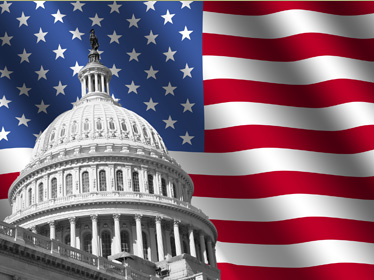
The Federal Reserve dramatically slashes both the federal funds target rate and discount rate twice in little more than a week, confirming that the central bank has thrown inflation fighting to the winds. The interest rate reductions also confirm the Bush Administration’s (and the Fed’s) cheap-dollar policy.
While this is bad news for inflation hawks, it’s a delightful development for people who think the government should manage international trade. They believe that the U.S. trade and broader current account deficits reflect America’s lack of competitiveness and are inherently bad. According to this thinking, a dollar devaluation is virtuous because it makes U.S. goods more attractive. Such thinking is common, even among some economists. It’s bunk.
Just consider the most recent bout of dollar weakness. The tradeweighted value of the greenback has fallen 21% since 2001. So did this weakness in the currency create prosperity or even shrink the trade deficit? No. Since 2001 exports increased 78%, but imports increased even more, 85%. This left the trade deficit twice as large in the third quarter of 2007 as it was in the last quarter of 2001.
Politicians are tempted to cure a trade deficit with a weak dollar. The cure is worse than the disease.
To appreciate just how ingrained the devaluationist bunk is, go back to 1971. That year Richard Nixon abandoned the Bretton Woods system of fixed exchange rates. He closed the gold window, imposed a surcharge on manufactured imports and demanded that other big industrial countries allow their currencies to appreciate against the dollar before he would remove the surcharge. They all did, leaving a foreign exchange system of 22 years’ duration in tatters and giving the cheap-dollar mantra a comfortable home in Washington, D.C.
Did the Nixon cheap-dollar policy make exports grow faster than imports? Scarcely. The U.S. trade deficit has been in negative territory every year since 1975.
Nothing better demonstrates the impotency of devaluations in creating a trade surplus than the U.S.-Japan story. Starting with the Nixon Administration, the U.S. has pursued a two-pronged strategy: protectionist threats coupled with demands for a yen appreciation (that is to say, a cheaper dollar). Amid this madness there have been some intervals of lucidity. The first Reagan Administration (1981-84) and the Clinton Administration (after April 1995) embraced a strongdollar policy. The trend, though, is in line with the mercantilist view that dollar weakness is something to be sought after. Since 1971 the yen has appreciated 240% from its Bretton Woods value (360 to the dollar) to its value today (106 to the dollar).
According to the devaluationists, that cheapening of the dollar against the yen should have worked wonders on the U.S. trade deficit and in particular on the two-way trade deficit with Japan. That didn’t happen.
The U.S. trade deficit not only kept growing, but Japan’s contribution to it ballooned from 26% in 1977 to 58% in 1991. (In 2000 China overtook Japan as the largest contributor to the deficit. Now Japan accounts for only 11%.)
With the U.S. trade deficit continuing to pose a “problem,” both the Bush Administration and the Fed turned to that old discredited antidote, a cheap dollar. The main thing that has changed since the early 1990s is that the U.S. trade deficit has become bigger in absolute and relative terms, and China has replaced Japan as the target of protectionist wrath. Will the current cheap-dollar ploy change the U.S. trade and current account picture? No.
Truths in economics boil down to accounting principles, as immutable as the laws of physics. Our current account deficit is equal to the sum of two quantities: the excess of private investment over savings and the government deficit.
The last ten years can be divided into three periods. In the late 1990s the public sector was in surplus, and the current account deficit was the result of an investment boom coupled with a savings drought.
With the end of the dot-com surge in 2000, the private sector’s contribution to the current account deficit shrank. But the slack was more than made up by the government’s spendthrift habits. By late 2003 the real estate boom had kicked in, and both the private investment-savings gaps and government shortfalls were contributing mightily to current account deficits.
Trade imbalances are all about net-savings propensities, not changes in exchange rates. As the coming recession gathers force, the private investment rate will slow and the savings rate will increase, closing the investment-savings gap. At the same time, government deficits will probably creep up.
On balance the current account deficit may well ease a bit. Unfortunately, however, this development won’t stop the irrational agitation for a cheap dollar.
Author Steve H. Hanke

0 responses on "Devaluationist Bunk"